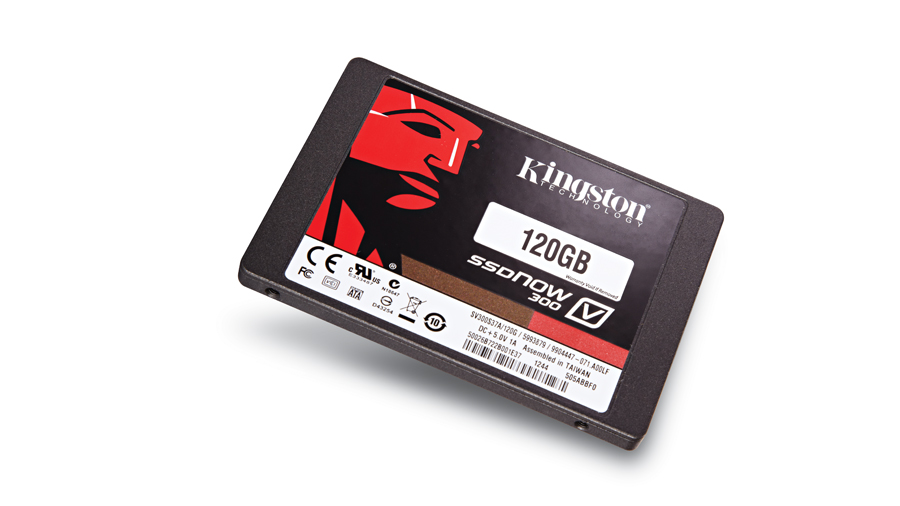TechRadar Verdict
Pros
- +
Good performance
- +
Competitively priced
- +
Good accessories
Cons
- -
Incompressible data performance could be better
- -
SandForce showing signs of age
Why you can trust TechRadar
This must be a frustrating time for any manufacturer producing SSDs with the SandForce controller. You're sat waiting for the next generation of controller while Marvell, OCZ and Samsung gleefully launch their own to entice the market. If you're a smaller company you just have to suck it up, but if you're Intel or Kingston, you must act now to try to stem the interest in the new toys.
Just as Intel has done with the 335 series, Kingston has come up with a new range of drives matching the old LSI SandForce SF-2281 controllers with the latest ideas in NAND technology. Where the 335 uses the latest Intel's own 20nm MLC NAND, Kingston has turned to Toshiba for the NAND in the SSDNow 300V.
Aimed at consumers and business users, the SSDNow V300 is built around Toshiba's latest 19nm Toggle NAND, making it the first SandForce equipped drive to do so. Plextor is already using it in the M5 Pro series, but its drives use Marvell controllers.
The officially quoted sustained read/write figures for the drive are 450MB/s for both, which actually turned out to be a very conservative estimate compared to the figures we got when testing the drives with the ATTO benchmark. We recorded a read figure of 556MB/s and 527MB/s for writes, which is significantly better than advertised, but not something you're going to know unless you sit there staring at benchmarks all day.
Like us. When it comes to being tested with incompressible data, the old Achilles' heel of the SandForce controller shows itself. The performance of the drive dips dramatically, as expected in the AS SSD benchmark, producing sequential reads of 458MB/s and writes of just 164MB/s.
It was a similar story with the CrystalDiskMark benchmark. The default incompressible data test produced sequential read/write scores of 424MB/s and 173MB/s respectively.
Benchmarks
Sequential read performance
AS SSD: Megabytes per second: Bigger is better
KINGSTON SSDNOW 300V 120GB: 458
OCZ VERTEX 4 256GB (V1.5FW): 435
INTEL SSD 335 240GB: 484
Sequential write performance
AS SSD: Megabytes per second: Bigger is better
KINGSTON SSDNOW 300V 120GB: 164
OCZ VERTEX 4 256GB (V1.5FW): 477
INTEL SSD 335 240GB: 313
4K random write performance
AS SSD: Megabytes per second: Bigger is better
KINGSTON SSDNOW 300V 120GB: 57
OCZ VERTEX 4 256GB (V1.5FW): 57
INTEL SSD 335 240GB: 56
Branded
Currently the drive is available in just three capacities - 60GB, 120GB and 240GB - with each capacity available in four different options: bare drive, notebook upgrade, desktop upgrade and a combo notebook/desktop upgrade kit. The latter was how Kingston supplied our 120GB review sample.
The notebook/desktop combo comes with an impressive box full of goodies: a pair of 3.5-inch mounting brackets for a PC, plus data and power cables, a 2.5-inch external USB 2.0 drive enclosure, a 7mm to 9.5mm adaptor so you can fit the drive into chunkier notebooks without it rattling around, an installation DVD and finally some hard drive cloning software. That's a whole lot of goodies, and thankfully makes upgrading a real cinch.
We've certainly seen some faster drives out there in the wild, and the SandForce controller is starting to really show its age now. Kingston though is being very aggressive in terms of pricing, and in such a crowded market that could give it an undeniable edge. With all that said though, prices of the quicker drives are dropping, so you could bide your time.
